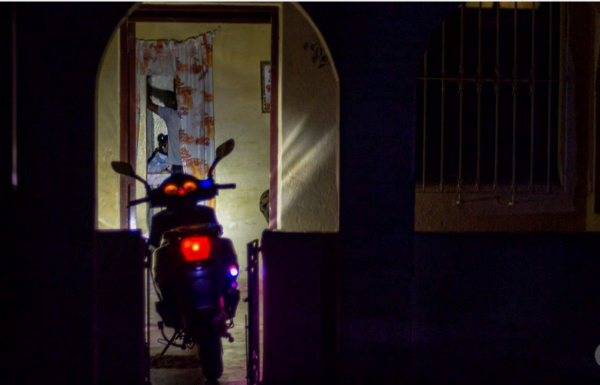The New Promise of the Cuban Gov. to Reduce Power Outages

HAVANA TIMES – “We will at least have one minute next year in which we will not consume imported fuel,” stated Vicente de la O Levy, Minister of Energy and Mines, during the televised program Mesa Redonda, broadcast on Wednesday, September 4, 2024.
The minister based his promise on “the introduction of renewable energy,” “the growth of Energas,” and “repairs to thermal units.” With these actions, the Cuban government hopes to reduce the frequent and extensive power outages that have affected the population throughout the year. The crisis worsened in July and August, according to official reports.
In the final days of August, there were power cuts lasting up to 12 hours, the minister admitted, exceeding the official estimates of four hours of scheduled outages a day while doing maintenance work on the thermal power plants that have been in operation for over 40 years, just to “keep them alive.”
Vicente de la O Levy attributed the “tense” situation to breakdowns in the old thermal power plants, the shortage of imported fuel, “especially in March, May, and some days in June”, the lack of spare parts, and an “extremely high” increase in demand.
According to the minister, the country consumes 8 million tons of fuel, of which it produces only 3 million and has to buy 5 million tons on the international market at high prices.
Among the largest consumers, the minister highlighted the limited private business sector. “There are a number of new businesses (…) that consume significant amounts… air conditioners, household appliances (…), tens of thousands of these come in through customs every year and are installed and consuming,” he said.
Cuba’s sources of electricity production include thermal power plants, the Energas company (which uses the gas accompanying oil), several barges rented from the Turkish company Karpowership, generator groups, and renewable energy sources.
According to the minister, the goal is to alleviate the situation by recovering power distributed from generator sets, continue maintenance on thermal plants, and increase gas production.
More ambitious is the plan to add around 2,000 megawatts to the system by 2028 with the installation of 92 new photovoltaic solar parks. Currently, only 4% of Cuba’s energy is produced from renewable sources. Rosell Guerra, director of Renewable Energy, stated on the Mesa Redonda TV program that civil works are underway for 30 solar parks.
Cuban economist Ricardo Torres, a researcher at the Observatorio de Monedas y Finanzas of El Toque, questioned the feasibility of the state’s strategy given the country’s current conditions. He noted: “The sugar industry, which was already in place, hasn’t been recapitalized to become an engine for energy production, and now we are talking about wanting to invest approximately 2 billion dollars in 2,000 MW of solar parks that produce energy intermittently and require storage systems to accompany them to use the energy generated during the day.”
“If Cuba had the sugar industry capable of producing ethanol for transportation and also generating electricity with proven technology from bagasse and agricultural waste, why now present this last-minute solution when we could have utilized a sector that had so much spillover into the economy?” added Torres.
While these and other questions remain unanswered by the authorities, the government continues to repeat the old mantra of asking the population to save energy. On Mesa Redonda, Minister Vicente de la O Levy gave the Cuban state as an example: “We are sacrificing the economy to affect the population less.”
The prolonged power outages were one of the triggers for the massive anti-government protests on July 11. 2021, as well as other more localized demonstrations in 2022, 2023, and 2024.
First published in Spanish by El Toque and translated and posted in English by Havana Times.






A much better choice is new natural gas powered electric plants will 4 key locations and about 260 gas wells also to be used for nitrogen fertilizer production and other key manufacturers
Small solar systems at hospitals and key hotels and food distribution centers can be a cost effective way to provide some daytime electricity for refrigerators and to reduce use of diesel backup power during the day.